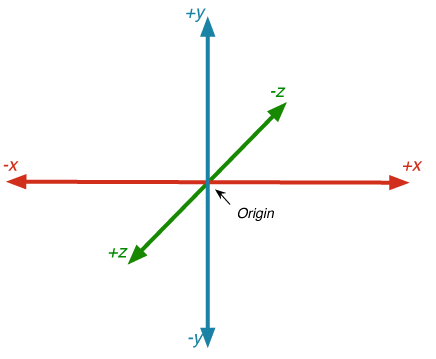Return to Center
When teaching martial, medical, or mystical concepts, I often use a simple 3-dimensional model of the three axes (plural for axis) X, Y, and Z. This visually depicts key principles in terms of Dao De Gong Fa cultivation.
The point at which the X, Y, and Z axes intersect represents our center. In a coordinate system this is called the origin and given the address (0,0,0). This means a value of zero on the X-axis, Y-axis, and Z-axis, respectively. Why 0? Because it is neutral, neither positive (+) nor negative (-).
In the parlance of Chinese philosophy, the axes are bipolar Tai Ji dualities whereas the center is nonpolar Wu Ji unity.
This central, primary, original, unitary point of neutrality has the connotations of stop, rest, calm, stillness, silence, peace, and tranquility. To maintain wellness we must find and root ourselves here. This is the purpose of Internal Gong Fa 1 and the reason it is called Centering Points. Staying dynamically connected to the center at all times is the antidote to the push and pull of constant daily stressors.
Speaking of, stressing is when we dissipate outwards along these three axes. We often lose, spend, and drain ourselves in excessive activity — mentally, emotionally, and physically. In this case, Gong Fa 1 is the relevant self-care prescription by investing time, energy, and attention to quietly recharge at our center.
Thus, besides the three dimensions, these three axes can also represent our three main human aspects. The X-axis (+X = right, -X = left) represents our emotional range. The Y-axis (+Y = up, -Y = down) represents our mental range. The Z-axis (+Z = front, -Z = back) represents our physical range.
It is absolutely normal to produce and pursue movement along these aspects. But when these projections become erratic and extreme then we can exhaust ourselves. On the other hand, when we do not flow through and cannot let go at particular points then we may stagnate ourselves.
A healthier strategy is to allow mental, emotional, and physical fluctuations but engage their waves from your stable center as much as possible. This is not the same as utter numbness, ignorance, hiding, escapism, or detachment.
We need not avoid or control our thoughts, feelings, and sensations per se but shift our relationship towards and thus experience of them. As the saying goes “distance makes the heart grow fonder”. Giving space creates potential for appreciation. Rather than drown in turmoil, we learn to surf above or swim beside it. Yet we always remain tethered to shore.
Since this is easier said then done we need methods to hone and remind us. Ultimately, equanimity is a trainable skill. Cultivation is a way to stay afloat and even enjoy diving into the turbulence which results from the subjective and objective interaction of our inner and outer lives.
When initially counseling patients, I tell them that “the most powerful way to use your mind for healing is not to let it run around like usual but to park it in your body”. Then I teach them to seed, water, and nourish their first center.
If these patients also become students of External Gong Fa or martial study then we can train and strengthen their centering by testing it in different challenging contexts.
However you do it, whether via Gong Fa or another practice, periodically reset by returning to your center. Go back home to your origin. You remember who you are and are not. You will feel better.

